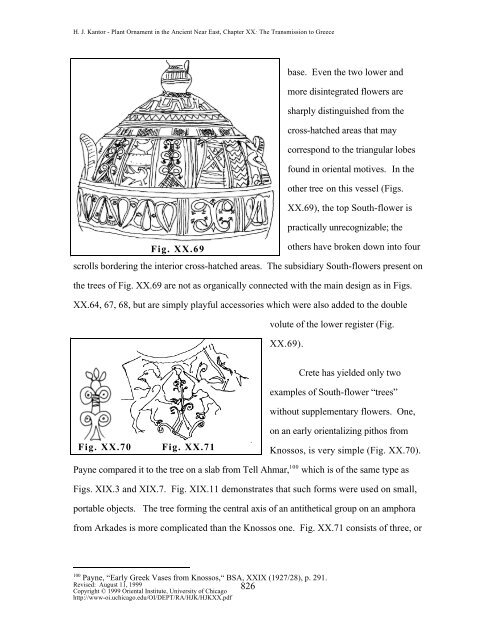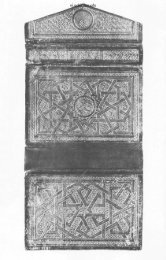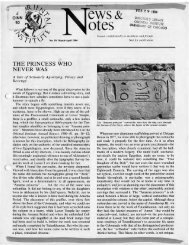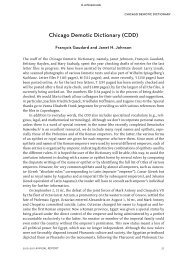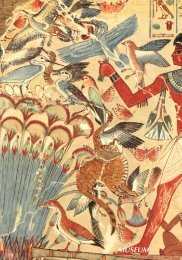chapter xx. the transition to greece - Oriental Institute - University of ...
chapter xx. the transition to greece - Oriental Institute - University of ...
chapter xx. the transition to greece - Oriental Institute - University of ...
You also want an ePaper? Increase the reach of your titles
YUMPU automatically turns print PDFs into web optimized ePapers that Google loves.
H. J. Kan<strong>to</strong>r - Plant Ornament in <strong>the</strong> Ancient Near East, Chapter XX: The Transmission <strong>to</strong> Greece<br />
base. Even <strong>the</strong> two lower and<br />
more disintegrated flowers are<br />
sharply distinguished from <strong>the</strong><br />
cross-hatched areas that may<br />
correspond <strong>to</strong> <strong>the</strong> triangular lobes<br />
found in oriental motives. In <strong>the</strong><br />
o<strong>the</strong>r tree on this vessel (Figs.<br />
XX.69), <strong>the</strong> <strong>to</strong>p South-flower is<br />
practically unrecognizable; <strong>the</strong><br />
Fig. XX.69<br />
o<strong>the</strong>rs have broken down in<strong>to</strong> four<br />
scrolls bordering <strong>the</strong> interior cross-hatched areas. The subsidiary South-flowers present on<br />
<strong>the</strong> trees <strong>of</strong> Fig. XX.69 are not as organically connected with <strong>the</strong> main design as in Figs.<br />
XX.64, 67, 68, but are simply playful accessories which were also added <strong>to</strong> <strong>the</strong> double<br />
volute <strong>of</strong> <strong>the</strong> lower register (Fig.<br />
XX.69).<br />
Crete has yielded only two<br />
examples <strong>of</strong> South-flower “trees”<br />
without supplementary flowers. One,<br />
Fig. XX.70<br />
Fig. XX.71<br />
on an early orientalizing pithos from<br />
Knossos, is very simple (Fig. XX.70).<br />
Payne compared it <strong>to</strong> <strong>the</strong> tree on a slab from Tell Ahmar, 100 which is <strong>of</strong> <strong>the</strong> same type as<br />
Figs. XIX.3 and XIX.7. Fig. XIX.11 demonstrates that such forms were used on small,<br />
portable objects. The tree forming <strong>the</strong> central axis <strong>of</strong> an anti<strong>the</strong>tical group on an amphora<br />
from Arkades is more complicated than <strong>the</strong> Knossos one. Fig. XX.71 consists <strong>of</strong> three, or<br />
100<br />
Payne, “Early Greek Vases from Knossos,“ BSA, XXIX (1927/28), p. 291.<br />
Revised: August 11, 1999<br />
826<br />
Copyright © 1999 <strong>Oriental</strong> <strong>Institute</strong>, <strong>University</strong> <strong>of</strong> Chicago<br />
http://www-oi.uchicago.edu/OI/DEPT/RA/HJK/HJKXX.pdf


